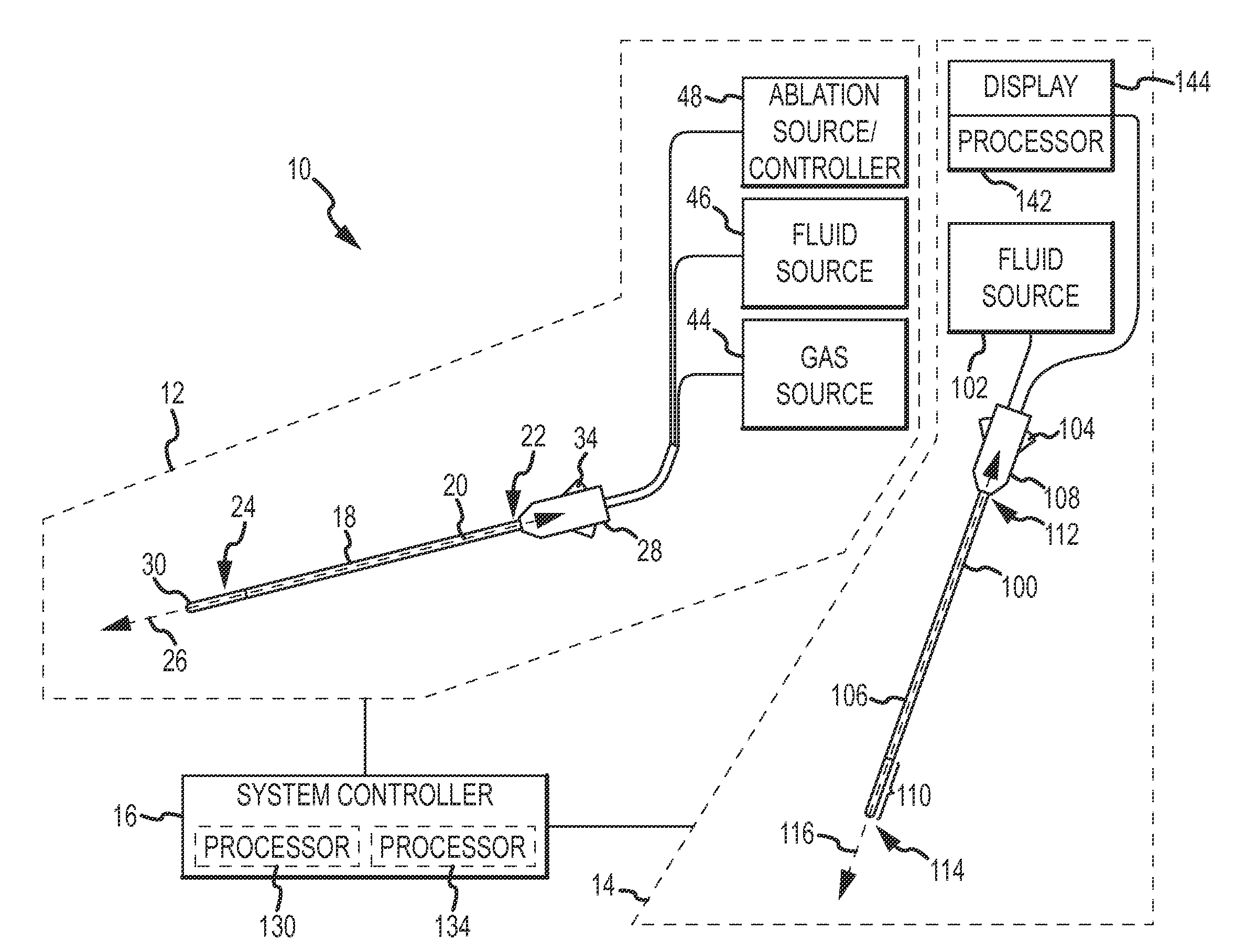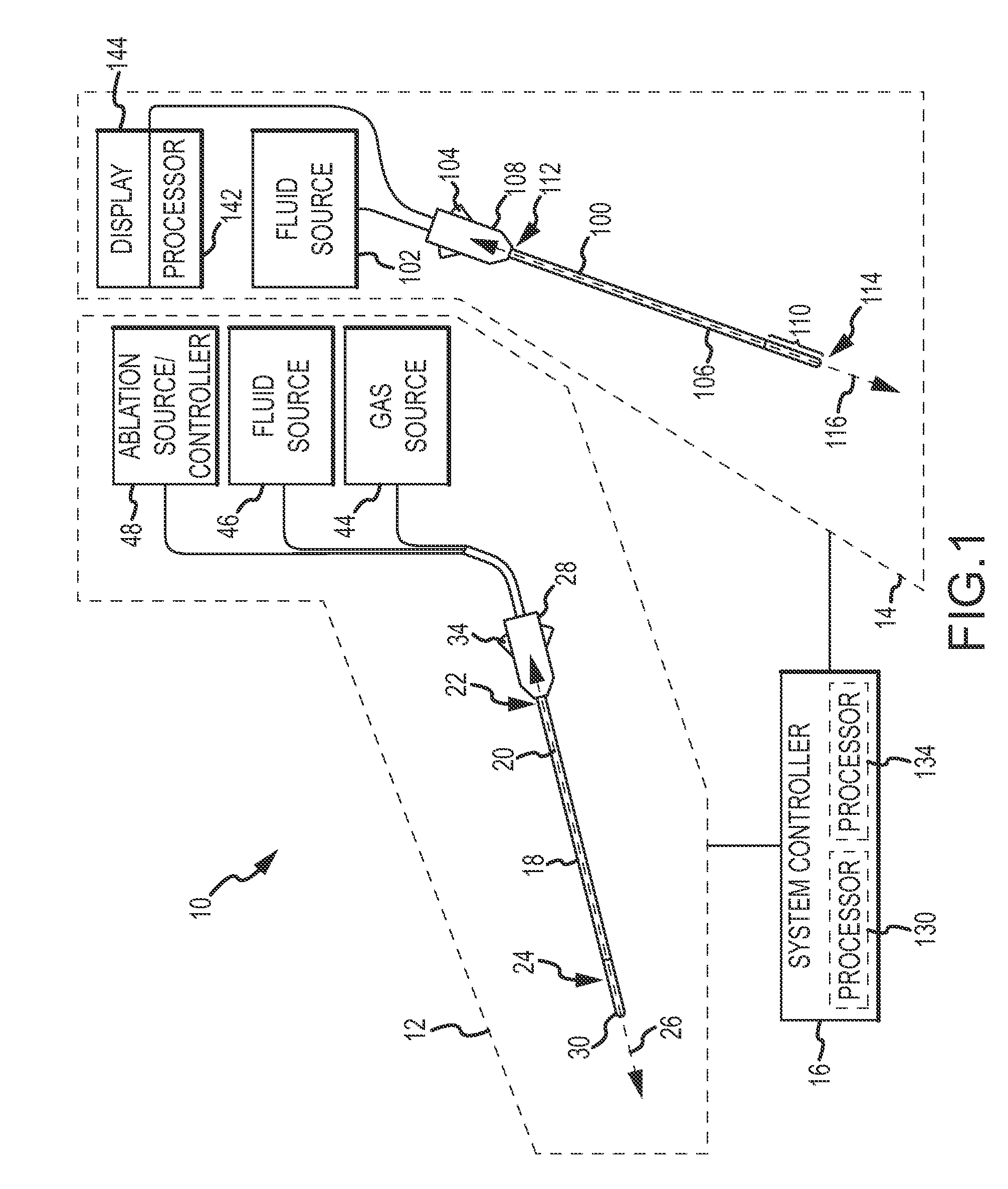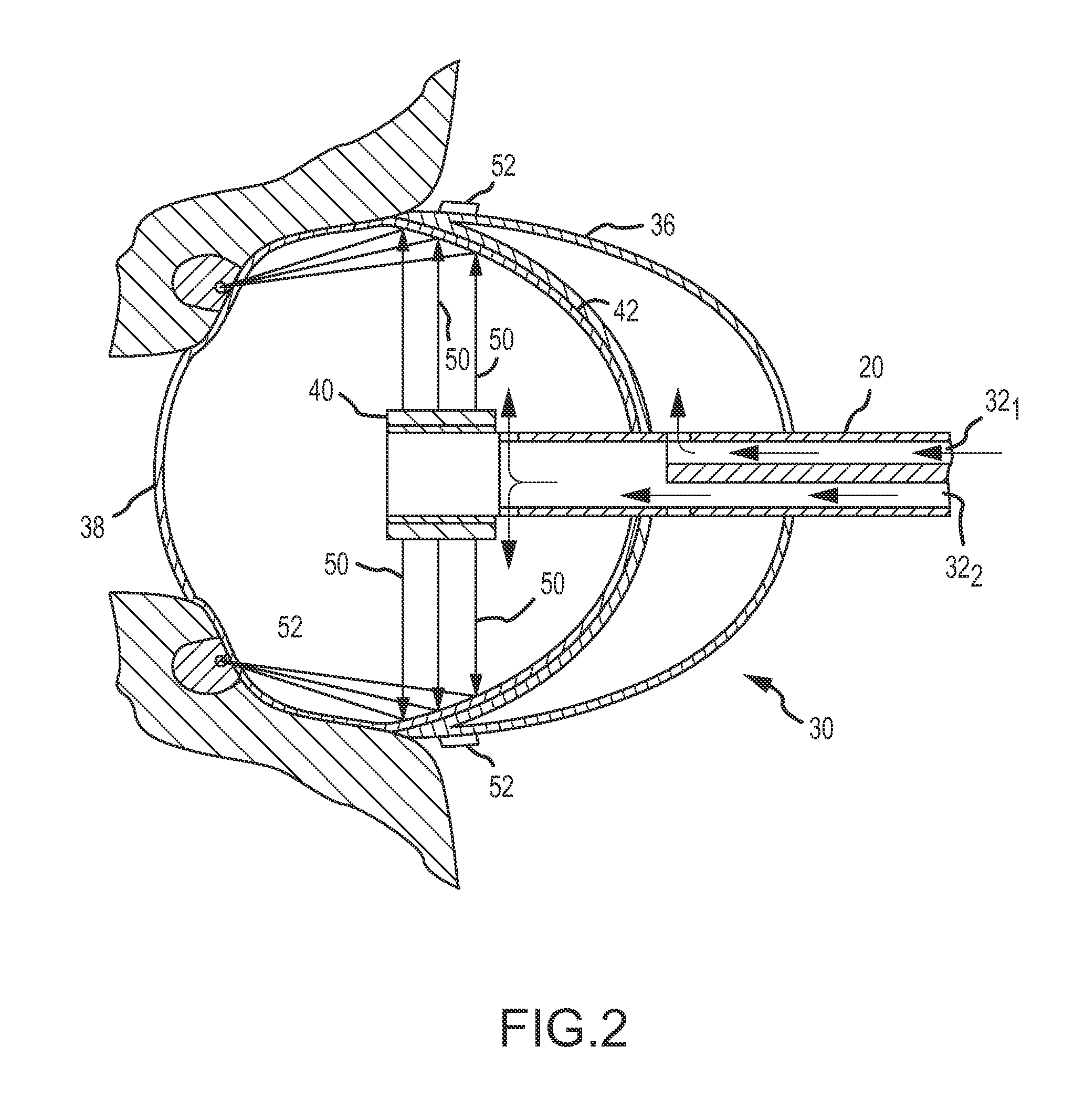Ablation system with blood leakage minimization and tissue protective capabilities
a technology of ablation system and blood leakage prevention, which is applied in the field of medical systems, can solve the problems of cooling blood passing through the balloons across the interface where ablative is carried out, unfavorable uniformity, and inability to easily correct or compensa
Active Publication Date: 2010-07-01
ST JUDE MEDICAL ATRIAL FIBRILLATION DIV
View PDF6 Cites 185 Cited by
- Summary
- Abstract
- Description
- Claims
- Application Information
AI Technical Summary
Problems solved by technology
However, these known devices are not without their drawbacks.
As such, when the balloons are inflated in an oval-shaped or irregular orifice, a sealed (to blood flow) interface between the balloon(s) and OS cannot be created, and as a result, cooling blood may leak past the balloons across the interface where ablative heating is to take place.
When the blood leaks past the balloon(s), it undesirably serves to cool the surface of the tissue over which it flows, and does so in a non-uniform manner that cannot be easily corrected or compensated for.
This is undesirable as these unintended cooled areas of tissue cannot be sufficiently continuously ablated or burned because they are being cooled by the blood, therefore, surface lesions cannot be controllably formed.
Another drawback in known endocardial catheter pulmonary vein ostia ablation systems relates to the monitoring, maintenance, and / or control of the temperature in non-targeted tissue proximate the targeted ablation site during the ablation procedure.
More particularly, when certain heart tissue is being ablated, the energy emitted from the ablating device may be strong enough or generate a high enough temperature to cause tissue necrosis in non-targeted tissue.
For example, portions of the esophagus are located proximate the heart and if an endocardial ablation site is near the esophagus the ablation energy itself, or heat generated by it and conducted away from the target, can potentially cause the nearby esophageal tissue to experience cell death.
Such a technique may require the use of a dense macroscopic thermistor array, which may result in a disposable temperature monitoring device being cost-prohibitive or large.
Additionally, such a technique may cause challenges with respect to the accuracy of the placement of the sensor(s), and it may be difficult to detect loss-of-contact between the sensor and the non-targeted tissue to be protected, or to sense the actual positioning of the sensor relative to the non-targeted tissue.
Further, without using one or more imaging means, it is exceedingly difficult to locate a single protective thermocouple directly opposite or in the field of energy delivery of the ablating device.
If such difficulty is compensated for by providing a thermocouple or thermistor array of larger area, another issue is presented, that being obtaining good thermal contact to the esophageal interior.
Finally, apparent proper placement of the monitoring thermocouple using fluoroscopy still cannot guarantee proper thermal contact to the esophagus, or thermal wetted contact to the esophagus (i.e., a wet contact which stays wet and thermally sinking during an ablation procedure so as prevent the corresponding tissue from drying out and overheating).
Method used
the structure of the environmentally friendly knitted fabric provided by the present invention; figure 2 Flow chart of the yarn wrapping machine for environmentally friendly knitted fabrics and storage devices; image 3 Is the parameter map of the yarn covering machine
View moreImage
Smart Image Click on the blue labels to locate them in the text.
Smart ImageViewing Examples
Examples
Experimental program
Comparison scheme
Effect test
example
(77)
[0165]In any of the above examples, the transducer of the ablation element may be rotated during an ablation procedure to counteract an angular non-uniformity of the transducer output via rotational averaging. This is particularly applicable to a non-uniform 360 degree piezotube which benefits from rotation or to a sector transducer of less than 360 degrees which must be rotated.
the structure of the environmentally friendly knitted fabric provided by the present invention; figure 2 Flow chart of the yarn wrapping machine for environmentally friendly knitted fabrics and storage devices; image 3 Is the parameter map of the yarn covering machine
Login to View More PUM
 Login to View More
Login to View More Abstract
An ablation system is provided that includes an ablating device and a probe. The probe is configured to be positioned in close proximity to a region of non-targeted tissue proximate an ablation site of targeted tissue. The probe includes an elongate shaft having proximal and distal ends, with a handle disposed at the proximal end thereof and a tissue protecting apparatus disposed at the distal end thereof. The ablating device includes an elongate shaft having proximal and distal ends, with a handle mounted at the proximal end thereof and an ablation element mounted at the distal end thereof. The ablation element includes an ultrasound transducer and an inflatable balloon surrounding the ultrasound transducer. The balloon includes a layer of gel disposed on its outer surface.
Description
CROSS REFERENCE TO RELATED APPLICATIONS[0001]This application claims the benefit of U.S. Provisional Patent Application Ser. No. 61 / 141,379 filed Dec. 30, 2008 and entitled “An Ablation System with Blood Leakage Compensation and Temperature Monitoring / Management Capabilities,” which is incorporated herein by reference in its entirety.BACKGROUND OF THE INVENTION[0002]a. Field of the Invention[0003]The present invention relates generally to medical systems for performing therapeutic functions, such as, for example, ablation procedures. More particularly, the present invention relates to an ablation system that includes blood leakage minimization and / or tissue protective capabilities.[0004]b. Background Art[0005]It is known to use minimally invasive surgical devices or ablating tools to perform ablation procedures in, for example, the heart. For instance, in treating a condition known as atrial fibrillation, it is known to advance an ablating tool through the vasculature of a patient t...
Claims
the structure of the environmentally friendly knitted fabric provided by the present invention; figure 2 Flow chart of the yarn wrapping machine for environmentally friendly knitted fabrics and storage devices; image 3 Is the parameter map of the yarn covering machine
Login to View More Application Information
Patent Timeline
 Login to View More
Login to View More IPC IPC(8): A61N7/02A61B5/01
CPCA61B6/12A61B2018/00005A61B18/1492A61B18/1815A61B18/24A61B2017/00084A61B2017/00106A61B2018/00011A61B2018/1861A61N7/022A61B2090/0418A61B2090/0481A61B2018/00791A61B2018/00648A61B2018/00577A61B2018/00488A61N7/02A61B2018/00029A61B18/04A61B2018/00982A61B2018/00285A61B2017/00022A61F7/00A61B17/22012A61B17/22004A61B2018/00636A61B7/00
Inventor SLIWA, JOHN W.
Owner ST JUDE MEDICAL ATRIAL FIBRILLATION DIV
Features
- R&D
- Intellectual Property
- Life Sciences
- Materials
- Tech Scout
Why Patsnap Eureka
- Unparalleled Data Quality
- Higher Quality Content
- 60% Fewer Hallucinations
Social media
Patsnap Eureka Blog
Learn More Browse by: Latest US Patents, China's latest patents, Technical Efficacy Thesaurus, Application Domain, Technology Topic, Popular Technical Reports.
© 2025 PatSnap. All rights reserved.Legal|Privacy policy|Modern Slavery Act Transparency Statement|Sitemap|About US| Contact US: help@patsnap.com



